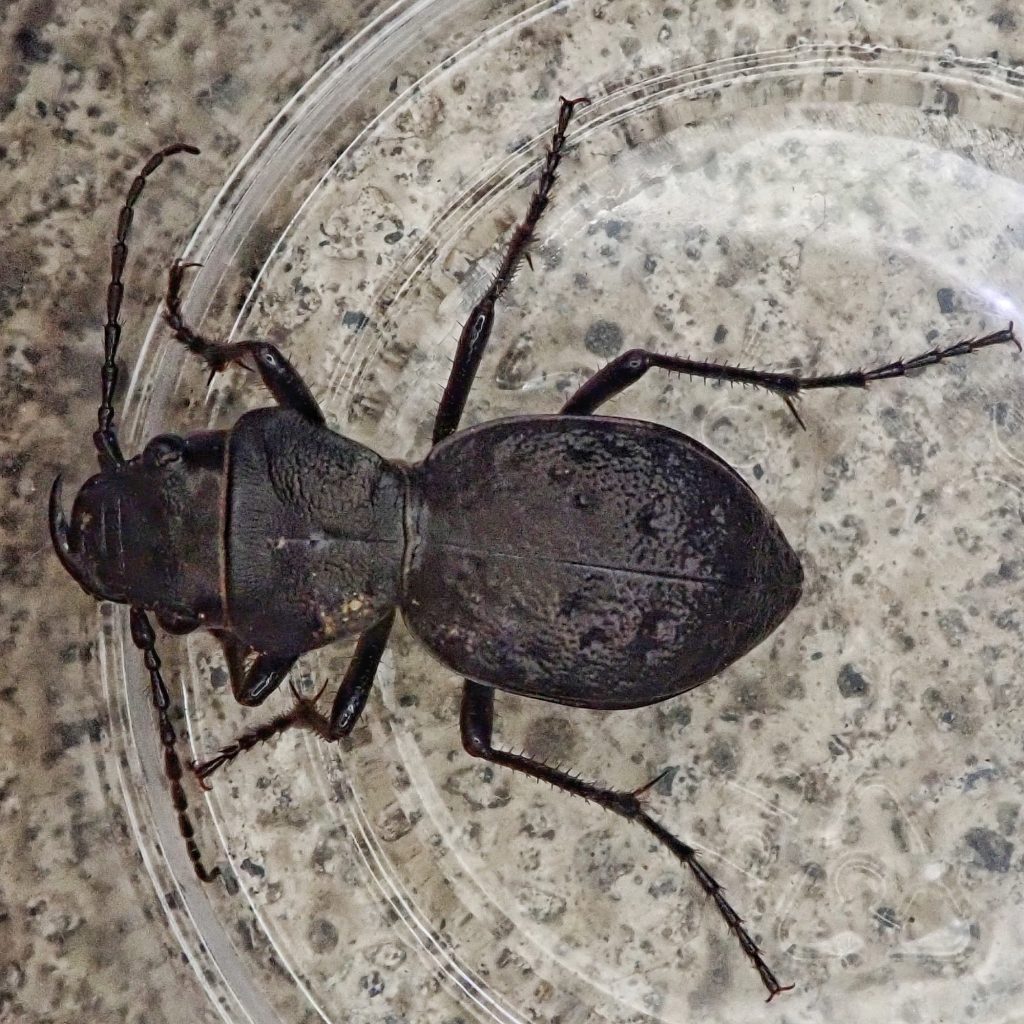
I was very excited to find another member of the genus Omus while running lights for moths at Kelly Rupp’s place on Willapa Bay, although I did not find this specimen at the lights. Instead it was tucked up against the door of his shop, and I was lucky that my headlamp beam fell upon it as I was walking by. But even in that first glance I knew what it was, having seen many photos of Omus dejeanii whilst researching Omus audouini for a profile last month.
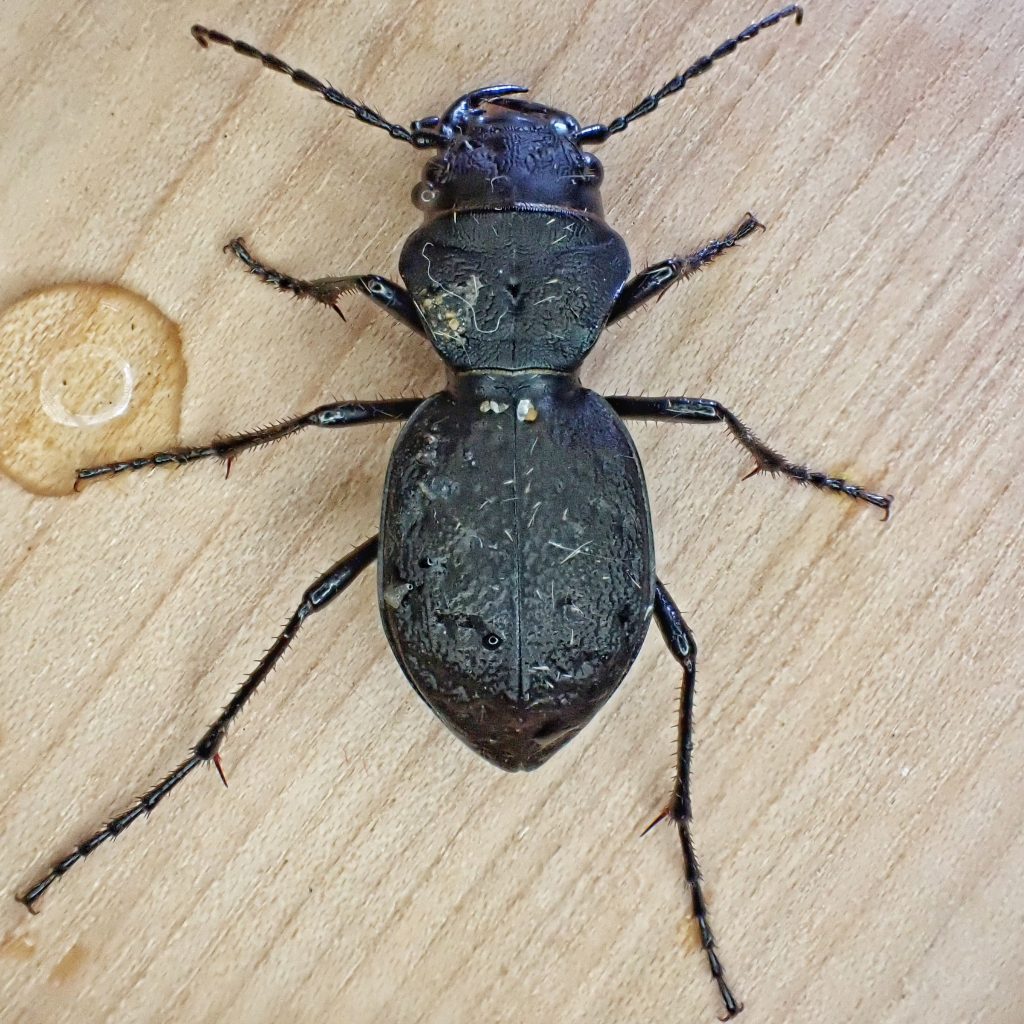
The genus Omus is considered to be one of the oldest lineages of the carabid subfamily Cicindelinae (though some sources consider the tiger beetles to belong in their own family, Cicindelidae), and they are some of the few in that subfamily that are flightless, live in forested areas, and are primarily nocturnal. In fact they are the only all black, flightless (due to fused elytra), nocturnal genus of tiger beetles in our region, since Amblycheila spp. (giant tiger beetles) don’t reach this far north.
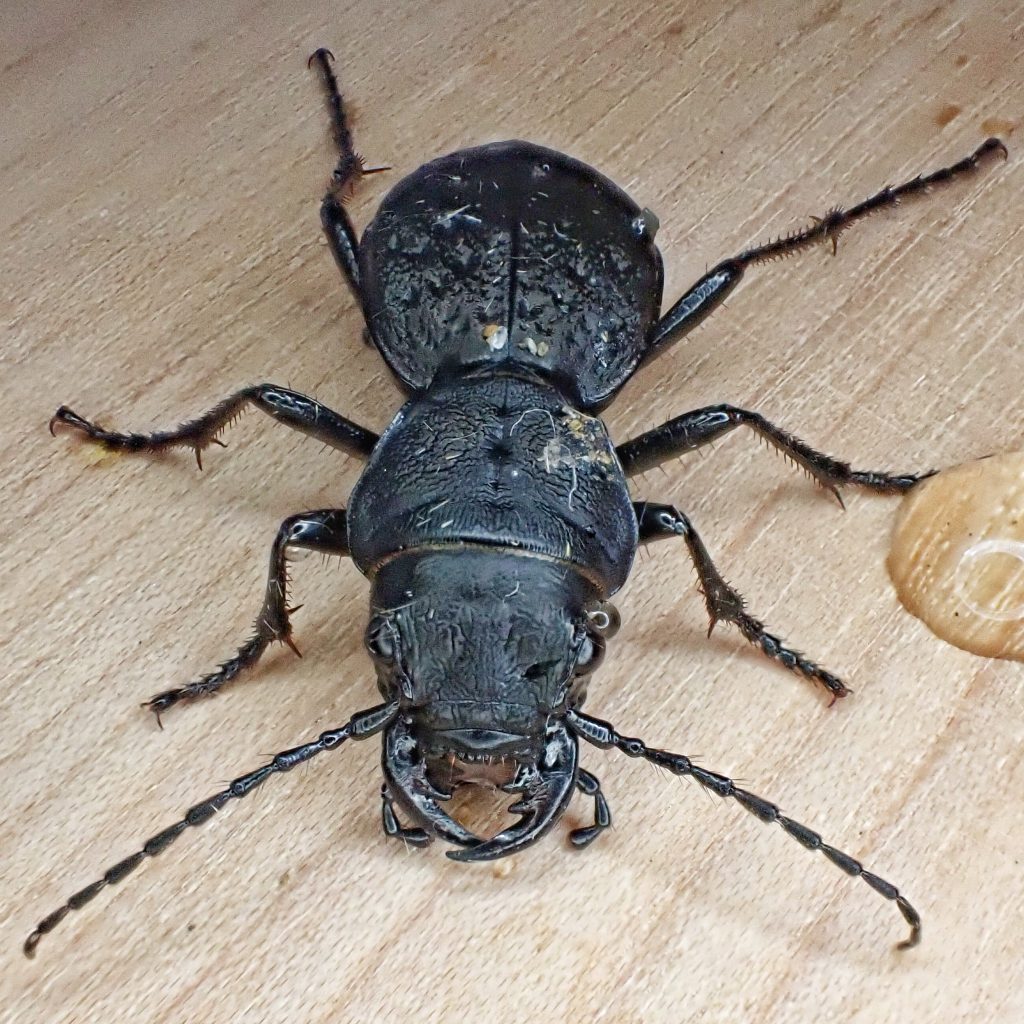
Omus spp. haven’t been studied as well as many species of tiger beetles, possibly because their nocturnal habits make direct observation difficult. I did find Robert K. Richardson’s dissertation comparing the life cycles and mating behavior of Omus dejeanii and O. audouini, and it is a fascinating read, although long and highly technical. As with any paper I find it best to go to the conclusions and work backwards from there to any points for which I desire evidence or clarification. It is beyond my scope to summarize all of them here.
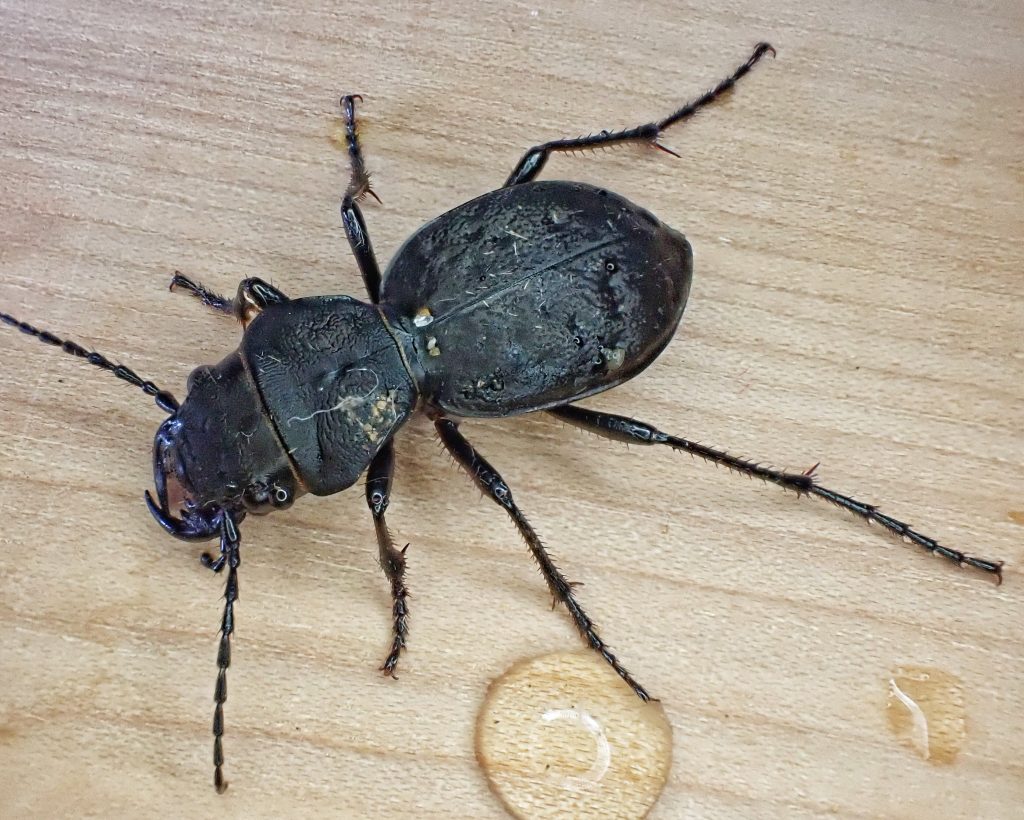
I learned two main things from it that I do want to talk about. The first is of general beetle interest, and that is the fact that sexual size dimorphism (most male beetles are significantly smaller than females) is probably related to the weight the females can carry and continue to move about, and seems correlated to whether the mating act takes long enough that the female may get hungry whilst it goes on (Omus spp. engage in copulation which may last up to 16 hours, and the males are much smaller). The second is that prey selection (hard-bodied for O. dejeanii with its more aggressive mandibular teeth, and soft-bodied for O. audouini which has ‘grasping’ rather than ‘cracking’ mandibular teeth) may be the mechanism whereby the two species can occupy the same ecological niches.
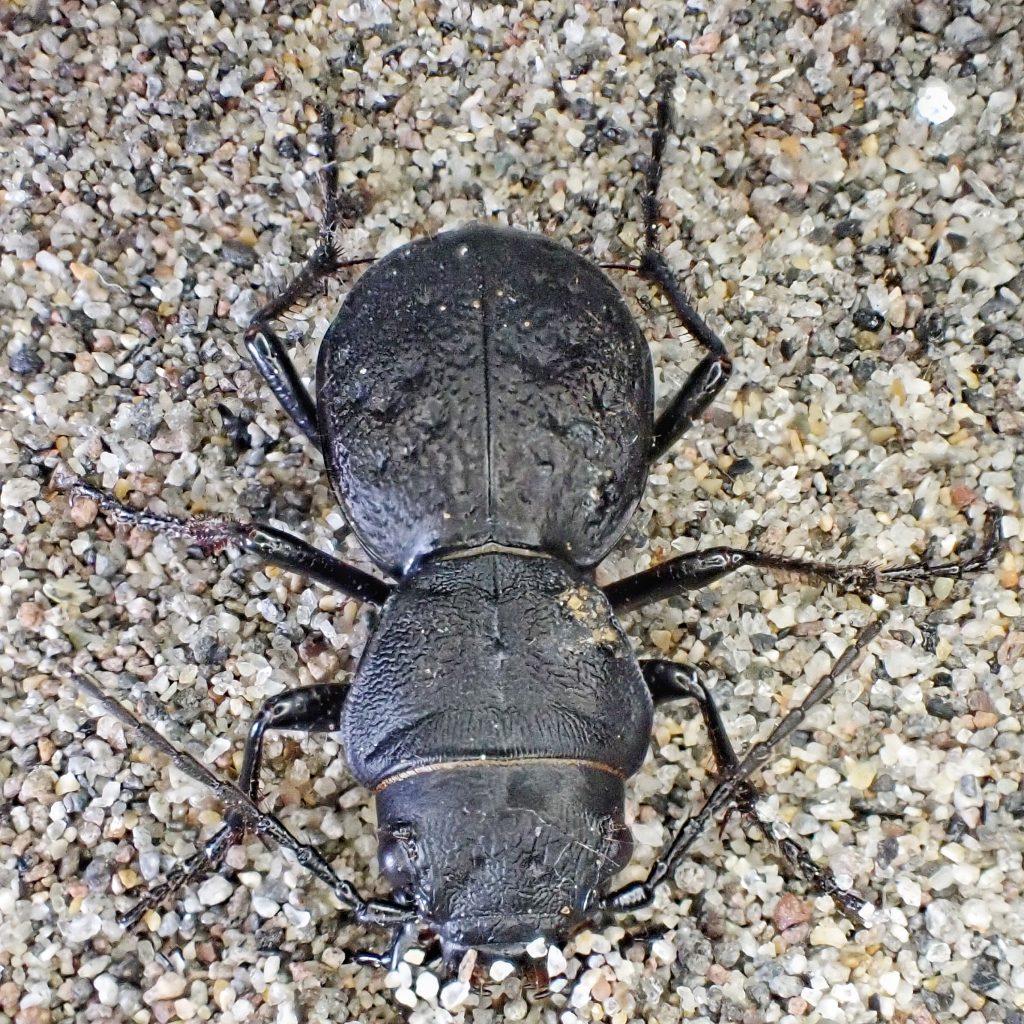
Description– Medium sized (18-21mm) dull bronzish black beetle with shallowly domed elytra that have broad, shallow dimples, and a flaring, trapezoidal pronotum.
Similar species– Other Omus are smaller (14-18mm) with domed, granular elytra lacking depressions; Omus audouini, with which it is frequently sympatric, has rounded, rather than trapezoidal, pronotum, and the front corners of the thorax are distinctly down turned.
Habitat-Woodland and forests with a thick canopy, and adjacent open areas, including among driftwood along beaches, up to 1,000’ elevation.
Range-Northwest endemic; occurs west of the Cascades.
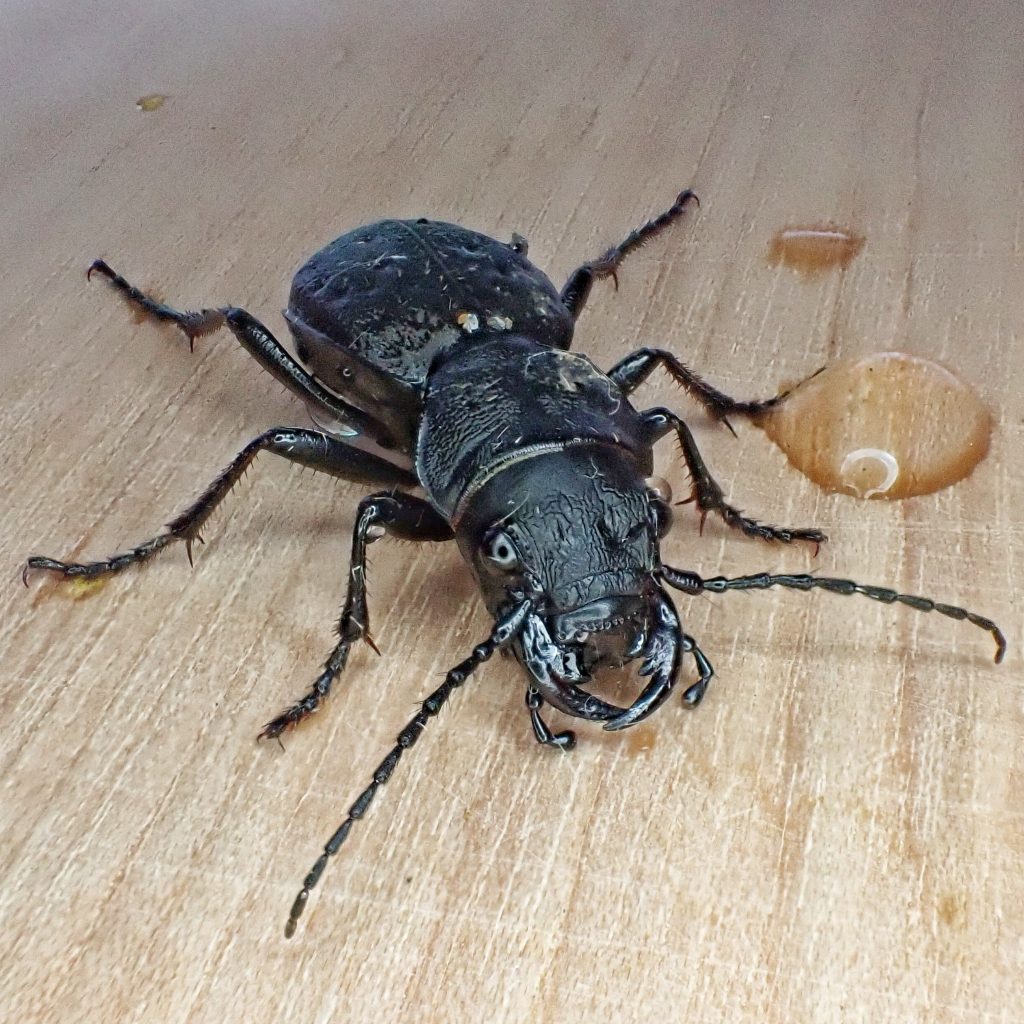
Eats-Whatever invertebrates it can subdue, although the size and shape of the mandibular teeth indicate they may prey on relatively hard bodied arthropods.
Eaten by– Whatever insectivores can subdue it; larvae are parasitized by some wasps.
Reproduction-Eggs are oviposited in clusters on, preferably vertical, clay banks; larvae build tunnels and attack anything that comes near, often plugging the entrance with their head to disguise it; larvae may overwinter as pupa; adults usually die off after a few months, although they may overwinter in diapause; the whole life cycle lasts 2-3 years.
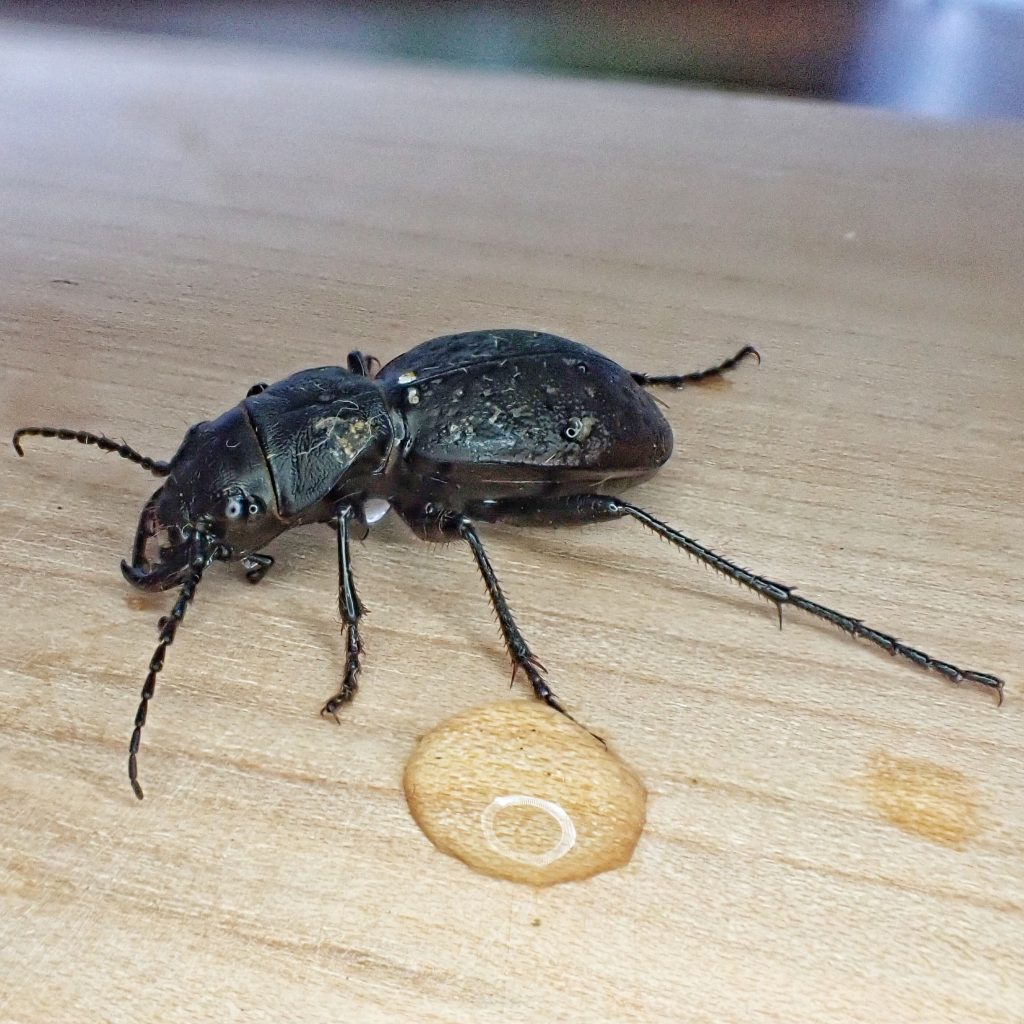
Adults active-Most active from March to October, but may be about during warm spells in winter at lower elevations.
Etymology of names–Omus seems to be from a Greek word for ‘fierce,cruel’. The specific epithet dejeanii honors Pierre François Marie Auguste Dejean (1780-1845), a French military officer who held the title of aide-de-camp to Napoleon Bonaparte, and was such a dedicated coleopterist that several of the 22,000 beetles in his collection came from the battlefield at Waterloo.
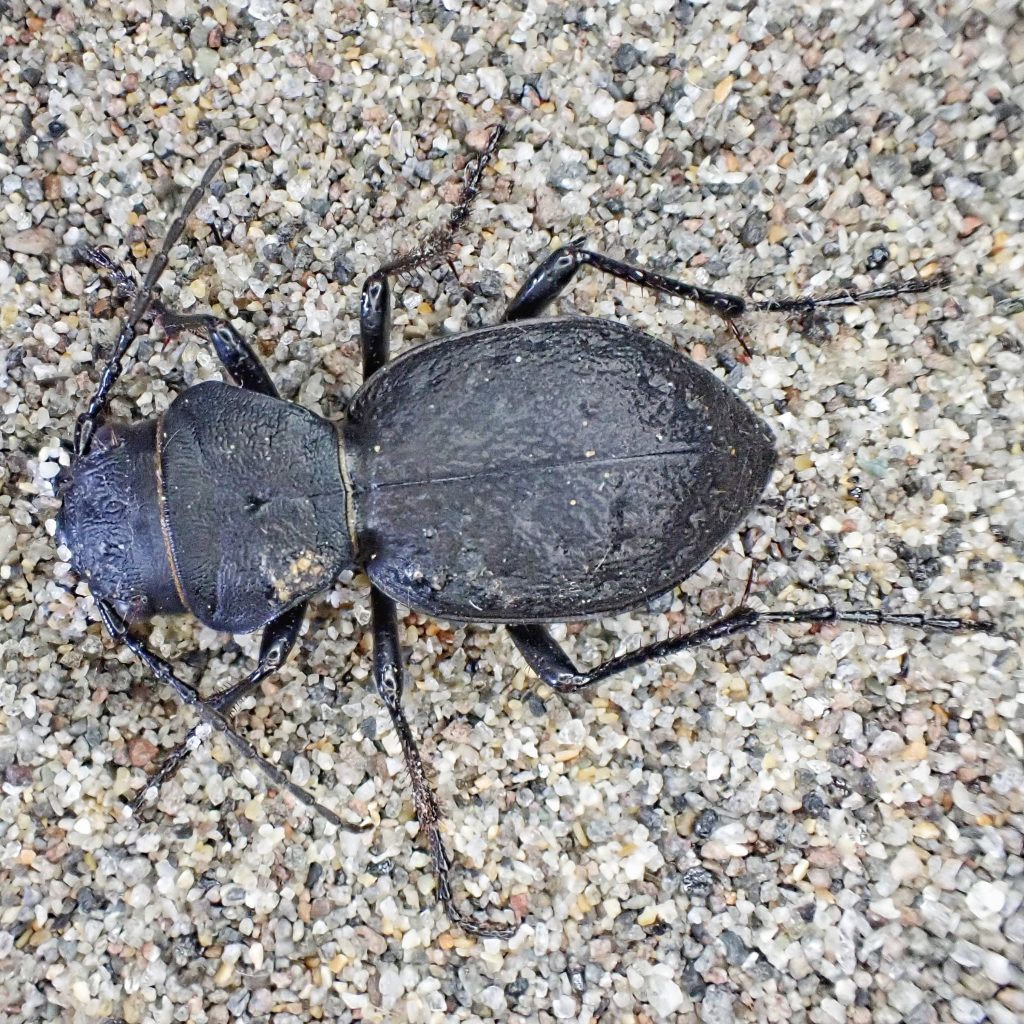
https://core.ac.uk/download/pdf/37774528.pdf
https://bugguide.net/node/view/36423
https://en.m.wikipedia.org/wiki/Pierre_Fran%C3%A7ois_Marie_Auguste_Dejean
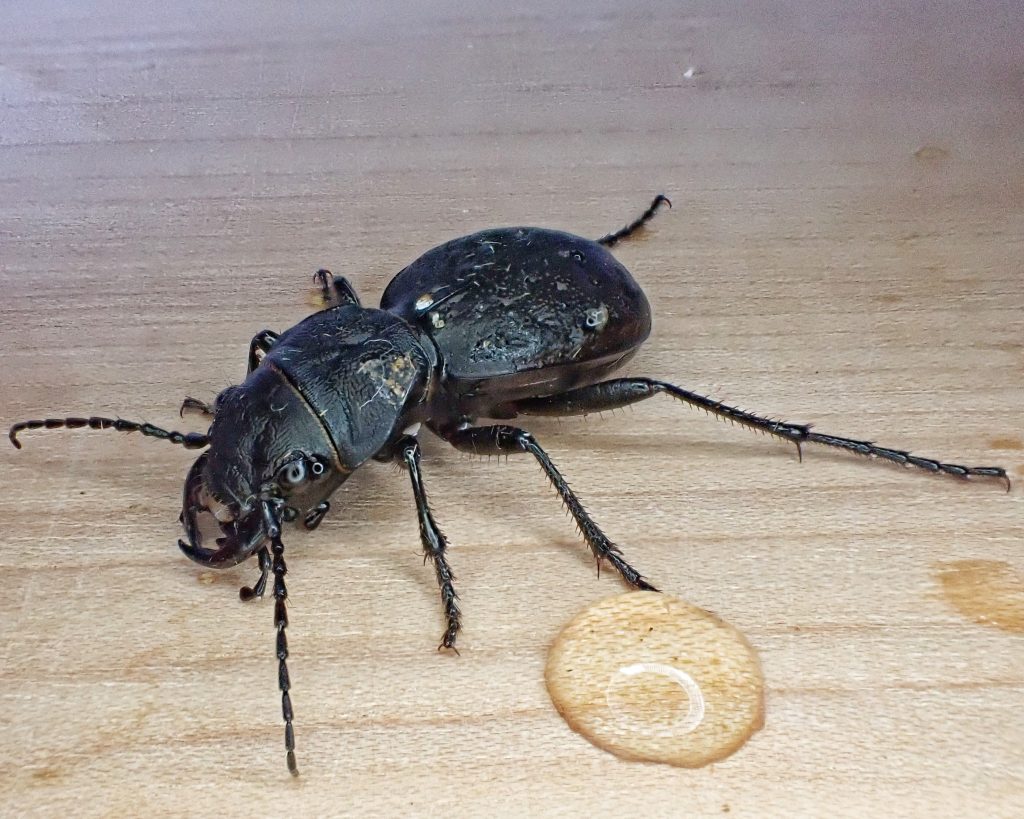
What a “tiger”! 😉 Thanks for another fascinating profile! 👍
Do you have any idea why copulation should have to take 16 hours??!!
It is apparently a combination of trying to prevent other males form mating, and trying to force out sperm from previous copulations.
Thanks again!
Just amazed how much info you are able to accumulate.
I appreciate it very much! Keep at it.
Jochen
Thanks Jochen! Sometimes it’s pretty straightforward, sometimes not so much. I keep accumulating books, PDFs, and other resources, so overall the research is easier. And it’s fun stuff. I love learning about these lifeforms!
I also appreciate the high quality of your photos. What equipment do you use?
Jochen
Thanks! I have an Olympus TG5 with built in photo stacking for the macros, and a Sony RX10 mark iv for anything over 3’.
Intereswting. I thought you were using focus stacking. I just recently started to get into it. Anyway, keep up your great work. I really appreciate it.
Jochen
LOVELY WORK, THANKS EVERYDAY:):)
Are you familiar with this expert?? He’s … one of a kind…
https://www.youtube.com/watch?v=Xbma869jMQY
Best Wishes:)
What expert is that, Sandra? I hope you don’t mean me, because I am no expert! Just a guy with a large interest, who learns a great deal everytime I research a profile😀
Sorry Sandra, the link didn’t come through in the comments. But I did see it in my notification. Thanks, that looks very interesting!